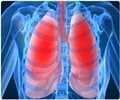
"The results of this study are groundbreaking because measures of physical activity were derived from routine clinical care, instead of lengthy physical activity surveys or activity devices in smaller research samples," said the study's lead author, Huong Nguyen, PhD, RN, of the Kaiser Permanente Southern California Department of Research & Evaluation. "Previous research has only analyzed the relationship between physical inactivity and increased mortality rate and hospitalizations, but not 30-day readmissions in patients with COPD."
The patient base in this study was ethnically diverse; the group of patients analyzed were 68 percent white, 15 percent black, 12 percent Hispanic, and 4 percent Asian/Pacific Islander. The number of men and women in the study was also similar to the overall COPD patient population.
"Many health care systems are currently focused on providing interventions at or soon after hospital discharge to reduce readmissions," Nguyen said. "This study is novel in that we were able to capture information about patients' usual physical activity well before the initial hospitalization and provides evidence that supports the promotion of physical activity across the COPD care continuum. Our findings suggest that regular physical activity could buffer the stresses of hospitalization. Future studies will focus on determining whether we can reduce hospitalizations by improving physical activity in patients with COPD."
According to a 2013 joint statement by the American Thoracic Society and the European Respiratory Society, exercise training, as part of pulmonary rehabilitation, has demonstrated improvement in quality of life in COPD patients. The two groups developed a set of physical activity training guidelines, which state that exercising three to five times a week will help improve COPD symptoms, physical functioning and quality of life.
In 2009, Kaiser Permanente became one of the first health care organizations to systemically log patients' physical activity in their electronic health records. As part of clinical practice, patients are asked about their level of physical activity during routine outpatient visits and their responses documented in their electronic health record. A Kaiser Permanente study in October 2012 found that the initiative was successful in compiling accurate and valuable information that can help clinicians better treat and counsel patients about their behavior and lifestyles. A December 2013 study found that asking patients about their physical activity habits resulted in weight loss in overweight patients and improved glucose control in patients with diabetes.
Advertisement















